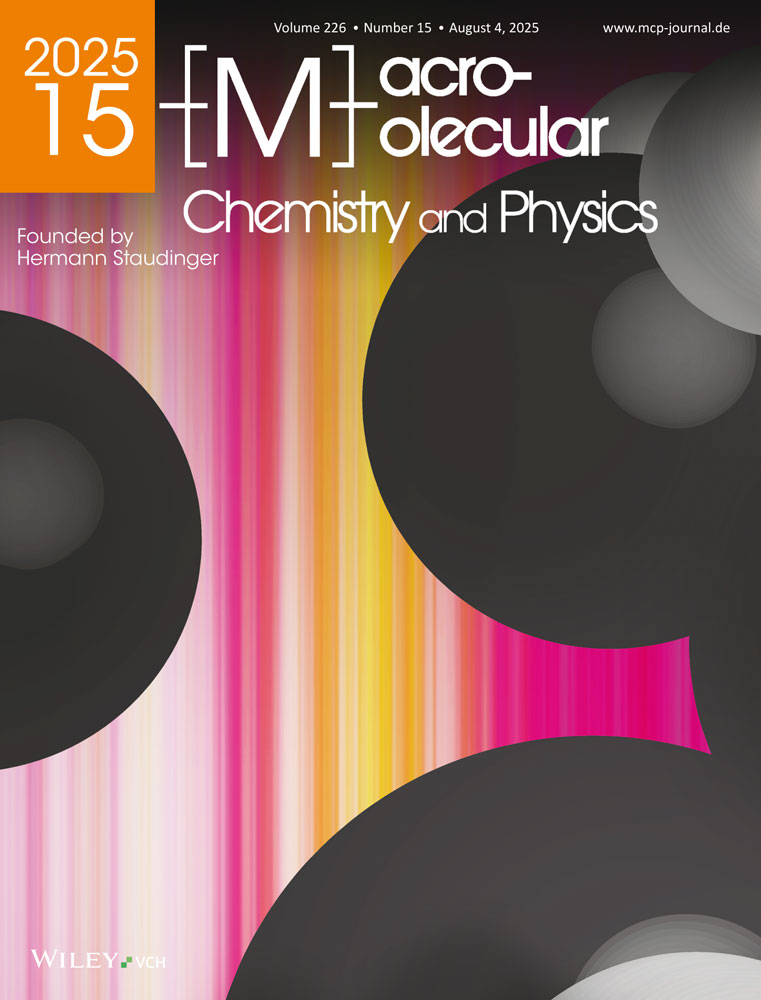Die radikalische copolymerisation in 3-stellung substituierter acryl- und methacrylaldehyde mit styrol
Abstract
deDie radikalische Copolymeristion von Styrol (S) mit Crotonaldehyd (3-Methylacrylaldehyd) (1a), Zimtaldehyd (1b), 2-Methyl-3-phenylacrylaldehyd (1c), 3-(2-Furyl)acrylaldehyd (1d) und 3-(2-Furyl)-2-methylacrylaldehyd (1e) wurde untersucht. Dabei wurden die Copolymerisationsparameter für die Monomerenpaare (r1a = 0,45, rS = 15,5; r1b = 0,95, rS = 2,9; r1c = 0,04, rS = 13,0) bestimmt.
Die substituierten Aldehyde vermindern die Polymerisationsgeschwindigkeit durch sterische Hinderung und übertragungsreaktionen, selbst bei geringen Konzentrationen an Furylderivaten im Monomergemisch. Die Copolymerisation der Aldehyd-Monomere verläuft wie bei anderen Vinylmonomeren, nur bei 1e wurde eine andere Art der Polyreaktion beobachtet. Dort findet man im Copolymer konjugierte CO und CC Bindungen. Die Struktur der Copolymeren wird auch durch die bekannten Cyclisierungsreaktionen von Aldehydgruppen zu Pyranringen kompliziert. Es wurde gefunden, daß der Reaktionsverlauf der Cyclisierung nach IR-Messungen in übereinstimmung mit den statistischen Voraussagen der Sequenzlängen-Verteilung von Copolymeren ist.
Abstract
enRadical copolymerization of styrene (S) with crotonaldehyde (3-methylacrylaldehyde) (1a), cinnamaldehyde (1b), 2-methyl-3-phenylacrylaldehyde (1c), 3-(2-furyl)acrylaldehyde (1b), and 3-(2-furyl)-2-methylacrylaldehyde (1e) was studied. Monomer reactivity ratios (r1a = 0,45, rS = 15,5; r1b = 0,95, rS = 2,9; r1c = 0,04, rS = 13,0) were estimated. It was found that the polymerization of the substituted aldehydes is influenced by steric hindrance and by transfer reactions, and the polymerization rate decreases even at low concentrations of furyl derivatives in the monomer feed. The aldehyde monomers undergo copolymerization as other vinylic monomers except 1e. In the copolymer of 1e with styrene conjugate double bonds (CO and CC) were found. The structure of the copolymers is further complicated owing to a possibility of forming pyrane rings arising from neighbouring aldehyde units by cyclisation. The IR data are in good agreement with the statistical assumptions on the sequence length distribution of the monomeric units.




